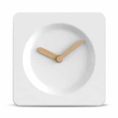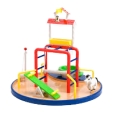According to a Department of Health study, 3 in 10 Australians avoid or delay going to the dentist because of cost. For a country as developed as Australia, the statistics related to both adults and children who suffer from health problems such as tooth decay are shockingly high. And yet, in 2022, there are some excellent solutions for lost or damaged teeth, with dental implants leading the way in terms of effectiveness.
However, dental implants are one of the most costly solutions, which is a barrier for many people. That’s why it’s important to know that there are many other options available. But first, let’s look at dental implants themselves.
What Are Dental Implants?
Dental implants can be one of the best solutions for missing teeth. They are artificial teeth attached using titanium screws embedded into the jawbone to provide a secure, everlasting solution that both feel and look natural.
Different Types Of Dental Implants
Endosteal Implants
Endosteal implants are embedded into your jawbone and act as an artificial root, which holds prosthetic teeth in place. Endosteal implants are one of the most typical implant types and are frequently used across all methods of implants.
Subperiosteal Implants
Subperiosteal implants are the next most common type of implants and are placed on or above the jawbone. This implant type is used if someone’s jawbone isn’t healthy enough and doesn’t provide a strong enough foundation to support Endosteal implants.
Different Methods Of Dental Implants
These are some of the methods used in dental implant surgery.
All-On-4 Dental Implants
All-on-4 implants use four sets of Endosteal screws that screw into the jawbone that support a row of artificial teeth. This complete teeth replacement is ideal for badly damaged, broken or decayed teeth.
All-On-6 Dental Implants
All-on-6 implants are essentially the same as all-on-4 but use six screws instead of four. These implants can be placed into the upper or lower jaw to hold prosthetic teeth in place. Many dentists believe that using six screws instead of four provides a more robust, more stable long term solution.
Individual Implants
Narrowing things down to the individual tooth, individual implants are used for patients with only one or a few missing teeth. The method is essentially the same, with the missing tooth being replaced by a titanium screw and prosthetic tooth. The aim is a tooth that both looks and feels natural.
Whole Mouth Dental Implants
Patients who have had all their teeth knocked out or lost due to decay need a complete solution. Whole mouth dental implants are used for patients who need an entire tooth restoration on both the upper and lower jaws. The number of screws used can vary depending on the patient and is an excellent but extremely costly solution.
Best Alternatives To Dental Implants
Same-Day Dental Implants (Teeth In A Day)
Same-day dental implants are an accurate description of what they are. While traditionally having dental implants would be a months-long procedure consisting of check-ups, a long healing process and multiple dentist visits, same-day implants streamline this process.
The entire thing consists of only three stages. Consultation, surgery, and follow up. You won’t leave after the surgery with your permanent tooth replacements, but you will walk out of the dentists with teeth that look and feel great.
You will have a temporary implant to essentially ‘fill the gap’ while your gum heals (after the damaged tooth has been removed), then 3-4 months down the track after the gums have healed, you’ll get your permanent tooth implant.
Mini-Implants
Mini implants are pretty much the same as traditional implants, only the screw is a lot smaller (3mm). They are not screwed into the jawbone entirely and are used when the jawbone isn’t healthy enough to support a full-sized implant.
Conventional Dental Bridge
While a relatively old fashioned method of tooth replacement, a prosthetic tooth is moulded to the teeth on either side, therefore creating a bridge across the gap caused by a missing tooth.
If you want to read more about dental bonding, check out this post.
Partial Denture
Made of either metal or plastic, partial dentures are the cheapest and most cost-effective method of tooth replacement. Dentures fill gaps from missing teeth and can be taken out. But despite the reduced cost, partial dentures are significantly less comfortable than implants.
Alternatives Aplenty
Now you know that expensive dental implants aren’t the only way to replace missing or decayed teeth—some options suit almost all needs and budgets.
To recap, here are some of the alternative to dental implants:
- Same-day implants
- Mini-implants
- Conventional dental bridge
- Partial denture
If you think you need any more advice or help regarding your dental implant procedure, please give us a call today. We’d love to help.
Read More:











